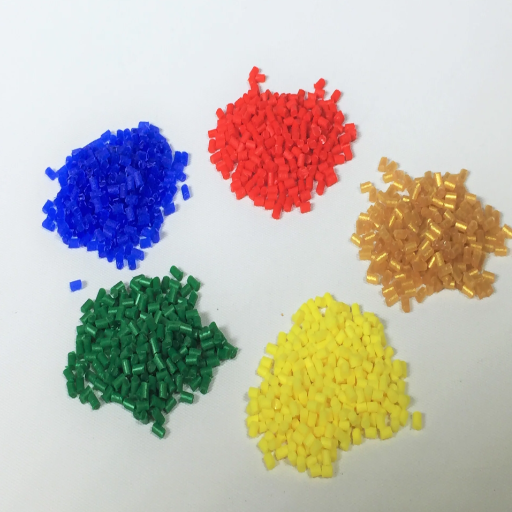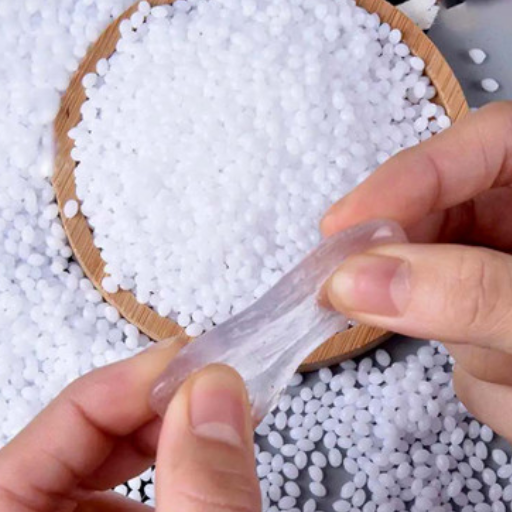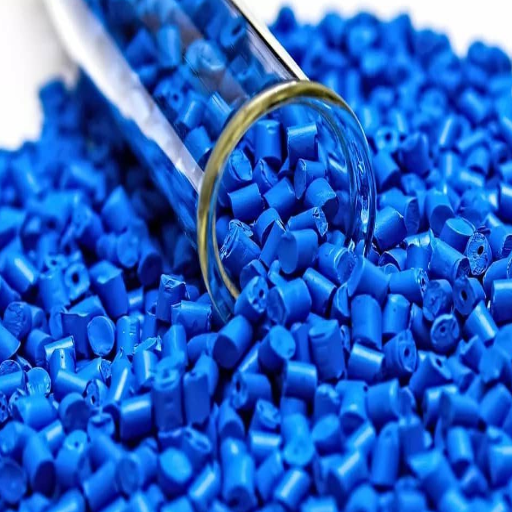Polyethylene is one of the most important types of plastics used around the globe. It is equally prominent in the construction and packing industries because of its unique characteristics. In this blog, we will explore the chemistry and types of polyethylene, its uses, and its effects on various industries across the globe. We will also discuss its ecological impact, sustainability concerns, and efforts to make it more eco-friendly. No matter their expertise level, we hope to provide every reader with the essential knowledge on polyethylene’s industrial relevance and its impact on modern-day engineering and materials.
What is the Difference Between Plastic and Polyethylene?
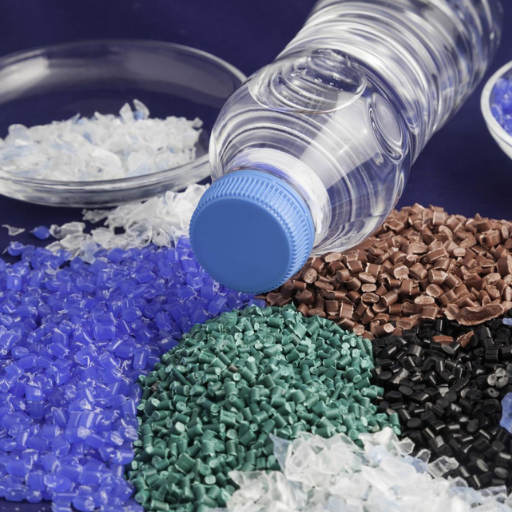
As an umbrella term for numerous materials, the word plastic contains inside of it synthetic polyethylene, which is a polymer formed from ethylene monomers. Polyethylene is widely used because of its low cost, but it is also highly resistant to chemicals. Because of this, many tools and jars are made out of it. So, other than saying that polyethylene is a type of plastic, one can also say that it is a polymer synthesized from ethylene and is used in place of plastic.
Defining Plastic and Its Varieties
An additional synonym would be given by Oxford Languages which defines plastic as: a broad kind of synthetic or semi-synthetic materials that rely on polymers of lower molar mass. These polymers are long chains of molecules that can be conditioned to specific heats and pressure, thus being able to be shaped in other tissues. There are two broader categories of plastics based on changes upon the heat contact with them during operation, which are the following:
1. Thermoplastics– These can be melted and reshaped numerous times without undergoing any chemical changes. For example: polyethylene (PE), polypropylene (PP), polyvinyl (PVC), and polystyrene (PS).
2. Thermosetting Plastics – The exact opposite of the latter – these will undergo a chemical change when heated, which makes them lose the ability to be remolded or reshaped. Epoxy resins, phenolic resins, and polyurethane are some examples.
From packaging and automotive parts to medical devices, consumer goods, and even some industrial products, plastics are an important resource. Understanding these classifications and features is essential for allocating certain materials to specific industries.
Understanding Polyethylene as a Polymer
The most widely used kinds of plastic include polyethylene. It’s relatively easy to get and use and is very flexible. It’s classified under a subclass called thermoplastic polymers which implies that it can be heated up and cooled down multiple times without much break in strength. There are different types of polyethylene which include low-density polyethylene (LDPE), high-density polyethylene (HDPE), and linear low-density polyethylene (LLDPE). All three, alongside other types, can be produced through the polymerization of ethylene gas.
Different types of polyethylene offer unique benefits, tailoring every one of them to specific applications. You will find LDPE in plastic bags as it is the least dense type of polyethylene and therefore thinnest. Alliance HDPE is the strongest among all; being the toughest, most well-suited and most commonly used plastic for everything construction. Pipes, containers, and even some household goods are HDPE’sdomain due to their strength and resistance to harsh weather like strong wind. The combination of LDPE and greater tensile strength also results in LLDPE, which is the reason you’ll commonly find it in stretch films.
Polyethylene is critical to various domains, such as construction, automobiles, and even consumer goods. On the contrary, its application in construction is limited by the growing concerns of plastic waste and the need for sustainable alternatives. The material’s low weight, its resistance to damage, and chemical attack make it useful in many fields.
The Role of Polythene in Everyday Products
Polythene or polyethylene is a type of plastic that has many uses. They can be found in our daily lives as well. In packaging form that’s flexible such as containers, bags, or even shrink wraps, polythene is highly preferred due to its being flexible yet strong. Its impact resistance and low density add to the value. Polythene is the most commonly used plastic for packaging. LDPE has a values for the density of 0.910-0.940 g/cm³. Its tensile strength lies in the range of 8-25 MPa. The measurements for HDPE is 0.940-0.970 g/cm³ for density and 20-37 MPa for tensile strength. Unlike LDPE, HDPE is more rigid allowing it to be used for construction materials, detergent bottles, milk jugs and other containers.
Due to its low pricing, polythene is highly valued domestically as well as industrially and economically. Although we do have these advantages, we also need to consider how effective recycling processes are at this time, especially for materials that are non-bio-degradable, and eco-friendly bio-degradable materials that are designed to help lessen damage to the environment.
How is Polyethylene Produced?
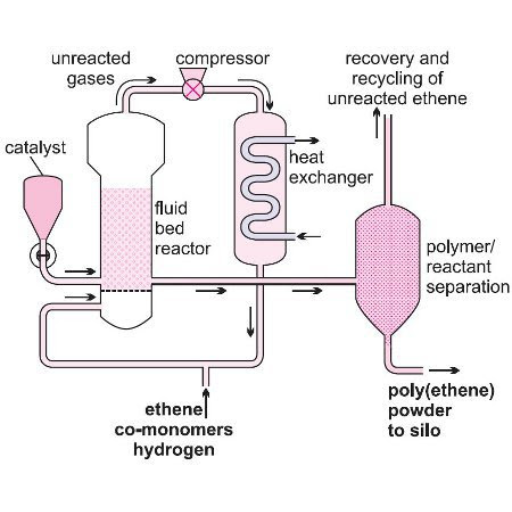
Polyethylene is made from polyethylene glycol and natural gas through the polymerization of ethylene monomers. Conditions can lead to the formation of both low-density polyethylene (LDPE) and high-density polyethylene (HDPE) variants. Specific traits in the final product can be achieved through polymerization synthesis using a Ziegler-Natta or metallocene catalyst. These techniques offer manufacturers control over the density, branching, and molecular structure of polyethylene, and other corresponding applications.
The Monomer and Molecular Structure
Suzanne cites, polyethylene is synthesized from the monomer ethylene which is a hydrocarbon of C₂H₄. Comprising of two carbon atoms that’s double bonded, each one is bonded to a hydrogen atom. Ethylene undergoes a polymerization process which breaks the double bond enabling the carbon atoms to single bond with other ethylene molecules. This results to a long chain polymer of the repeating units –CH₂–CH₂–. Depending on the branching and chain length, the structure of polyethylene can change. The changes of these structures is able to create different types of polyethylene such as LDPE and HDPE for varied purposes.
Stages in the Production of Polyethylene
- Polymerization Process
The manufacturing of polyethylene starts with polymerization of the ethylene molecule which is a simple hydrocarbon chemically obtained from natural gas or petroleum. If in the future it becomes possible to change the way of polymerization to something faster, this won’t change LDPE being formed by high-pressure free radical polymerization and HDPE and LLDPE through Ziegler-Natta or metallocene catalysts.
- Reactor Types
High-Pressure Polyethylene production requires tubular or autoclave reactors that perform polymerization under high temperatures and pressure. Low pressure means that fluidized bed or slurry phase reactors can be used, producing more linear and denser polyethylene structures.
- Pelletization
When the polymerization stage is completed, the polymer is extruded whilst in a molten state, and then cooled to create solid pellets. These serve as the primary feedstock which gets further processed into end products of polyethylene such as films, containers, and pipes.
- Quality Control and Additives
Polyethylene pellets are commonly enhanced with stabilizers, antioxidants, pigments, and other additives, resulting in higher performance. Stringent quality control processes confirm that the material’s mechanical and chemical properties are suited for the application purpose.
Commonly Used in Packaging and Plastic Products
Because of its remarkably strong, lightweight properties, polyethylene is extensively used in plastic products and packaging. It is mainly used in food containers, bowls, bottles, plastic bags and even as a shrink wrap. Its specific forms of grade such as low-density polyethylene and high-density polyethylene, affect its melting point, tensile strength and density. Based on industry standards, the tensile strength ranges anywhere from 10 to 40 megapascals, density from 0.91 to 0.96 grams per centimeter cubed and the melting point from 120 to 130 degrees celcius. These features facilitate easy and cost-effective manufacturing of durable polyethylene packaging.
What are the Different Forms of Polyethylene?
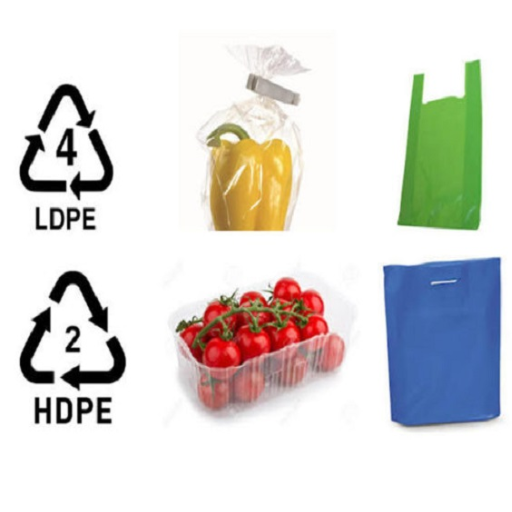
All the packaging forms stated above differ in their plastic properties, making them unique and useful for each specific application. Their most common forms are:
Low-Density Polyethylene: This form of polyethylene is the most common type used in plastic bags, film wraps and and even in bottles. Because of its flexibility and transparency, it’s very popular.
High-Density Polyethylene: This type is significantly stronger and more rigid making it ideal in construction. Its quite helpful in making detergent bottles, piping, and milk jugs.
Linear Low-Density Polyethylene: Specially designed stretch wraps and package films use this form, as it is composed of both strength and flexibility.
Ultra-High-Molecular-Weight Polyethylene: Used in durable industries such as bulletproof vest production and medical and aerospace equipment, this type of polyethylene is extremely tough.
Due to the differences in molecular structure and required needs for performance criteria, all of the stated polyethylene forms are specifically designed.
An Overview of Low-Density Polyethylene (LDPE)
Low-density polyethylene (LDPE) is a commercially available thermoplastic that is produced from ethylene monomer through polymerization. Its flexibility and resistance to chemicals make it LDPE suitable for many applications. Its unique properties of extraordinary deformation capability (ductile) and low resistance to tension (tensile strength) make it useful in low molecular weight (branching) materials.
LDPE can be found in thin moisture moisture-resistant plastic bags, food-protecting polyethylene wraps, and even as insulation around electrical wires. LDPE is categorized under #4 resin identification code, which makes it recyclable. However, the rates of recycling depend on the local facilities available. The combination of inexpensive cost and adaptable uses makes LDPE popular for consumers and industries. But the problems associated with plastics and what happens to them when disposed of have triggered the need for improved recycling alternatives.
Characteristics of High-Density Polyethylene (HDPE)
Just like every other subtype of polyethylene, High-Density Polyethylene, also known as HDPE, is a type of thermoplastic polymer. HDPE has a strength in its density which makes it useful in a multitude of applications. Its density is estimated to be somewhere between 0.93 – 0.97 g/cm³. Its strength against impacts, chemicals, and UV light makes HDPE an excellent choice for its uses in pipe and plastic lumber construction. Furthermore, HDPE being non-toxic and safe for food contact makes it an ideal material for juice, milk, and water containers.
The construction, automotive manufacturing, and even packaging industries are some of the many where HDPE has been widely accepted and utilized. The environmental friendliness of HDPE is further improved as it can bear the resin identification code #2, but like all materials, there are still ongoing issues in regard to their environmental friendliness and the simplicity of recycling them.
Exploring Cross-Linked Polyethylene
Cross-linking PEX (Permanently Cross-Linked Polyethylene) involves the structural changes to a type of plastic known as high-performance polyethylene, typically referred to as polymer plastics, by permanently cross-linking it. Its trimolecular cross-linking bonding enhances the material’s temperature and pressure withstanding capabilities, as well as its resistance to deteriorate chemically. Electric cable insulation, plumbing, and heating systems are only a few of the fields that take advantage of PEX’s wonderful physical characteristics. It is also preferred in commercial and residential buildings because it is easy to install and does not corrode.
Based on the production PEX can be divided into three types: PEX-A (peroxide or Engel method), PEX-B (silane method), and PEX-C (electron beam method). Among them, PEX-A has the highest and uniformly cross-linked flexibility. One challenge, among many, that PEX poses is its lack of eco-friendliness, primarily because of the troublesome-to-recycle cross-linked structure. Its low maintenance and unparalleled durability, along with these challenges, make PEX ideal for an endless list of applications.
How Does Recycling Impact Plastic and Polyethylene?
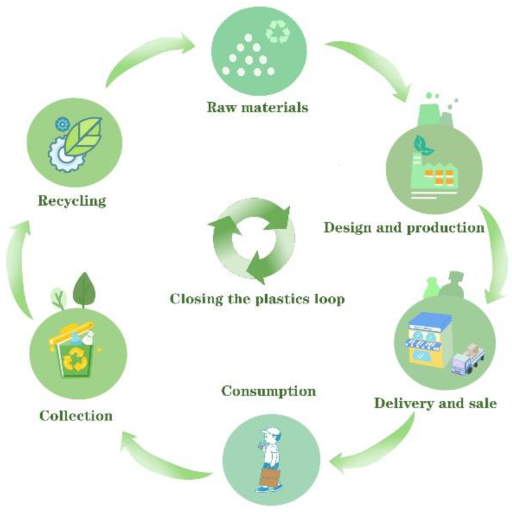
Recycling is an essential process in lessening the impact that plastics, including polyethylene, have on the environment. Through recycling, used plastics are reprocessed which helps conserve raw materials, energy, and unused space in landfills. In the case of polyethylene, recycling prolongs the material’s life as it can be made into bags, containers, or even construction materials. However, recycling is only as effective as the contaminants, sorting mechanisms, and particular types of polyethylene being recycled. Advanced recycling programs and methods are important in dealing with the extensive problem of plastic waste and managing resources in an eco-friendly way.
Methods of Plastic Recycling and Their Efficiency
The different approaches to plastic recycling have different levels of efficiency. The most popular technique, mechanical recycling, entails sorting, shredding, and melting plastics into new items. While it works well for clean and sorted plastics, contaminated or dirty plastics make it less effective. Chemical recycling breaks breakdown plastics into their chemical building blocks which allows for the manufacture of high-quality materials. However, chemical recycling is energy-intensive and expensive. The last type, energy recovery, changes plastics into fuel or energy. While it is useful, this method is less environmentally friendly because of harmful emissions. Enhancing overall recycling efficiency can be achieved through improvements in sorting technologies, lowering contamination, increasing advanced chemical recycling, and lessening contamination.
Challenges in Recycling Polythene Products
Recycling polythene products comes with many difficulties and begins with contamination problems. Polythene contains food leftovers, adhesives, and other mixed materials that make it harder to sort and process which lowers the quality of the recycled material. Another major challenge is polythene lacking advanced infrastructure. Many recycling plants do not possess the appropriate technology to properly recycle polythene, which results in an excess of waste or too much polythene in landfills. Furthermore, the expenses associated with recycling polythene tend to surpass the economic benefits because of processes such as chemical recycling, which is highly dependent on energy, and the market for recycled polythene products is very small. Also, consumer habits affect this situation. The lack of awareness and participation in these programs further complicates the effective management of polythene waste. Solving these issues requires changes in the approach to recycling technology, waste management systems, and the public’s involvement.
Innovations in Waste Management for Plastic
Recent developments in managing plastic waste have implemented alternatives that lessen its impact on the environment. One of these advancements includes chemical recycling, where plastics are split into their original monomers, making it easier to create high-quality recycled materials. Businesses are also looking into the development of biodegradable plastics, which, under certain conditions, can be broken down faster than traditional plastics.
Moreover, AI-powered systems to sort waste by type are being used to enhance the accuracy and speed of recycling by better classifying and separating plastics. Extended Producer Responsibility (EPR) systems are becoming more popular as they shift the burden of managing waste to the manufacturer throughout the entire lifecycle of a product. Finally, the construction of circular economies that concentrate on the reduction of plastic waste and the promotion of sustainability are being used in the private sector and in tandem with the public sector. Combined with other steps, these initiatives, alongside greater public participation, have the opportunity to change the management of plastic waste around the world.
What is the Environmental Impact of Plastic and Polyethylene?
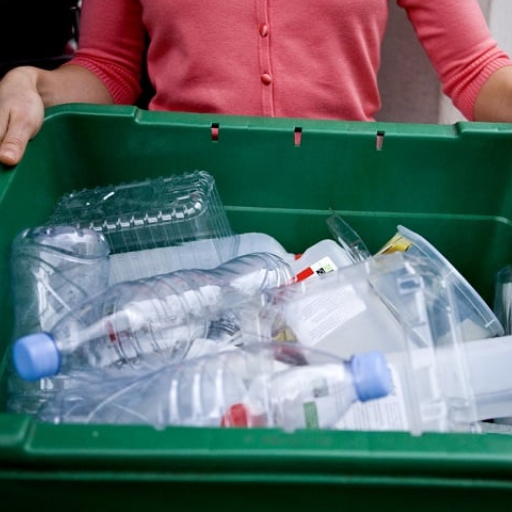
The environment suffers greatly because of plastic and polyethylene, and their impact is quite complex. These materials are pollutants throughout their entire life cycle – during production, use and even after disposal. The mining of fossil fuels that is necessary for the later on manufacturing of plastics leads to greenhouse gas emissions, which is a culprit of climate change. After use, polyethylene products are usually disposed of at landfills or as waste. In both cases, it takes several centuries for the product to break down, in the process permeating the soil with microplastics. These microplastics can be ingested by wildlife severely endangering creatures and whole ecosystems as they become part of the food chain. Additionally, plastic waste destroys the marine environment, and the death of sea creatures, and the strangest thing is that it also pollutes water and food consumed by people. All of these issues can only be managed by taking unified measures to limit the production of plastics, calling for improving the recycling ones and developing eco-friendly substitutes.
The Issue of Plastic Waste and Pollution
Year after year, the problem of plastic waste increases worldwide. Millions of tons of plastic enter ecosystems every year. As of now, the United Nations states that around 400 million tons of plastic is produced every year, of which only 9% is recycled. The plastics that are produced are mostly single-use items, which massively increases the burden on waste management systems and contaminates the environment.
Attempting to Solve Plastic Pollution:
Most attempts to reduce plastic pollution consider the need to slow down or eliminate consumption, increase recycling, shift to biodegradable options, and balance the use of advanced chemical recycling for breaking plastics into raw materials that can be reused. Moreover, other policies that can promote sustainable practices include banning plastic as well as extending producer responsibility (EPR) programs. At an individual level, there is so much more people can do such as choosing eco-friendly products to support greener initiatives in efforts to reduce single-use plastics. To tackle the adverse effects of plastic pollution, there is a need for collaboration between governments, industries, and communities.
Efforts Toward Biodegradation of Polyethylene
Biodegradation of polyethylene has remained problematic because of the strong, non-reactive structure of the polymer. Different types of microbial and enzymatic processes are being studied to assist in the breakdown of this plastic. Some bacteria and fungi have been able to degrade polyethylene, like Ideonella sakaiensis and Aspergillus species which operate under particular conditions. Furthermore, laccases and lipases are being studied as catalysts for polyethylene decomposition. Alongside this, biodegradation rate enhancements with UV light, chemical treatment, and augmentation with certain microbial consortia are being researched. Research bioengineering advances, such as the modification of microbes, are crucial for effective polyethylene solutions. There needs to be a balance between scientific research, commercial use, legislative support, and critically functioning policies in order to polyethylene waste.
Managing Plastic Debris in the Environment
Combatting plastic debris needs a comprehensive strategy that incorporates prevention, clean-up, and new technology solutions. Reducing the use of plastics, enhancing systems for recycling, and adopting new technologies in waste management can make a difference. Some are listed below:
- Source Reduction
- The use of biodegradable materials and stringent regulations on single-use plastic items can cut down the amount of plastic waste that currently exists. Policies can be put in place to protect the environment such as banning plastic straws/bags and offering rewards for using eco-friendly substitutes.
- Improved Waste Management
- Better collection and recycling procedures guarantee accurate recycling and reusing of waste plastic. Sophisticated sorting techniques like Automated Mechanical Separation (AMS) and Near Infrared Spectroscopy (NIR) Sorting can increase the efficiency of recycling. Globally, around 20-30% of polyethylene terephthalate (PET) is recycled. This has a lot of room for improvement.
- Advanced Recycling Technologies
- Chemical recycling and pyrolysis are examples of advanced recycling technologies. These techniques can recycle contaminated plastics that can’t be mechanically recycled. An example of this is pyrolysis which takes place between 300 and 800 degrees celsius without oxygen. During this process, plastics are converted into valuable fuels or other materials.
- Clean-Up Initiatives
- Projects such as The Ocean Cleanup implement systems that remove the trash within bodies of water, such as the Great Pacific Garbage Patch. Booms and skimmers are created to capture debris efficiently over large expanses and are very effective.
- Biodegradation and Bioengineering
- Research is still being conducted regarding microbial degradation involving plastic-eating species such as Pseudomonas putida and ideonella sakaiensis, which metabolize plastic under specific conditions. Ideonella sakaiensis uses PET as a source of carbon and energy, degrading it at 30°C.
- Public Awareness and Education
- Efforts to inform consumers on the ecological consequences of plastic pollution enhance responsibility towards proper usage and disposal. Change in actions can curb the need for increased plastic use.
The most effective approach to solving the issue of plastic pollution is through uniting these methods with strong governance and policy implementation.
References
Frequently Asked Questions (FAQ)
Q: What is polyethylene and how is it classified?
A: Polyethylene, also known as polythene, is a commonly produced plastic material. It is classified into different types based on its density and branching, including low density polyethylene (LDPE), linear low-density polyethylene (LLDPE), and high density polyethylene (HDPE). Each type has unique properties that make it suitable for various applications.
Q: How does the chemical structure of polyethylene affect its properties?
A: The chemical structure of polyethylene consists of long chains of ethylene monomers. This linear molecular structure influences its properties, such as flexibility, strength, and melting point. For example, high density polyethylene has a more linear structure, resulting in greater strength and rigidity compared to low density polyethylene.
Q: What are the environmental safety concerns associated with polyethylene and plastic consumption?
A: Environmental safety concerns associated with polyethylene and plastic consumption include pollution from waste plastic, plastic particles in the environment, and the impact of global plastic production on ecosystems. These issues highlight the need for responsible production, use, and disposal of plastic materials.
Q: How is low density polyethylene used in everyday products?
A: Low density polyethylene is used in a variety of everyday products due to its excellent flexibility and toughness. It is commonly used in plastic packaging, plastic films, and plastic wrap, offering a specific type of plastic solution for lightweight and durable applications.
Q: What makes high density polyethylene different from other types of polyethylene?
A: High density polyethylene differs from other types of polyethylene due to its higher density and more linear molecular structure. This results in a stronger and more rigid material, making it ideal for products like plastic bottles and containers that require durability and resistance to impact.
Q: How does linear low-density polyethylene compare to other polyethylene types?
A: Linear low-density polyethylene (LLDPE) is known for its superior tensile strength and impact resistance compared to other polyethylene types. It is often used in applications that require a combination of strength and flexibility, such as stretch films and packaging materials.
Q: Can polyethylene be recycled, and how is it converted into new products?
A: Yes, polyethylene can be recycled and converted into new products. The recycling process involves collecting waste plastic, cleaning it, and then remelting it to form new plastic materials. This helps reduce the environmental impact of plastic in the environment and supports sustainable plastic consumption practices.
Q: What role does polyethylene play in global plastic production?
A: Polyethylene plays a significant role in global plastic production as it is one of the most widely used and commonly produced plastics. Its versatility and wide range of applications make it a staple in the production of plastic products worldwide, from packaging to construction materials.
Q: How does the production of plastic impact environmental science?
A: The production of plastic impacts environmental science by contributing to pollution, resource depletion, and climate change. Studies in environmental science focus on mitigating these impacts through recycling, developing biodegradable alternatives, and reducing plastic consumption.

